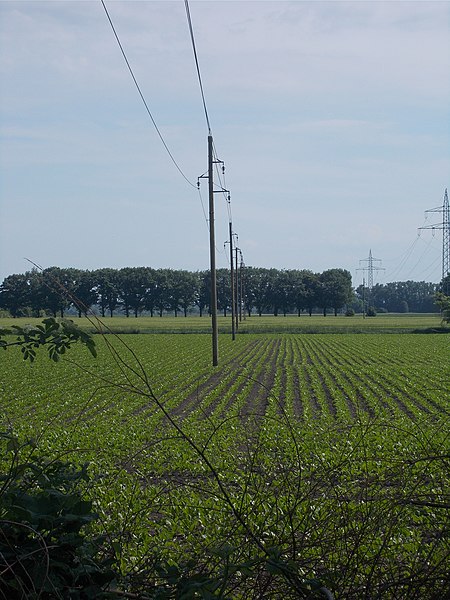A street light, light pole, lamp pole, lamppost, street lamp, light standard, or lamp standard is a raised source of light on the edge of a road or path. Similar lights may be found on a railway platform. When urban electric power distribution became ubiquitous in developed countries in the 20th century, lights for urban streets followed, or sometimes led.
Detail of a street light from Paris
Detail of a street light with Cupid, at the Austrian Parliament Building (Vienna)
William Murdoch's house in Redruth, UK, the first domestic house in the world to be lit by gas
Streetlights from an 1871 catalog
A utility pole is a column or post, usually made out of wood or aluminum alloy, used to support overhead power lines and various other public utilities, such as electrical cable, fiber optic cable, and related equipment such as transformers and street lights. It can be referred to as a transmission pole, telephone pole, telecommunication pole, power pole, hydro pole, telegraph pole, or telegraph post, depending on its application. A Stobie pole is a multi-purpose pole made of two steel joists held apart by a slab of concrete in the middle, generally found in South Australia.
Utility pole supporting wires for electrical power distribution, coaxial cable for cable television, and telephone cable. A pair of shoes can be seen hanging from the wires (center-left, far right)
Wooden electricity poles in Germany. In central Europe, lines usually run just straight across fields, rows of poles accompanying roads are quite rare.
Steel utility pole in Darwin, Australia
Typical North American utility pole, showing hardware for a residential 240/120 V split-phase service drop: (A,B,C) 3-phase primary distribution wires (mounted on a crossarm), (D) neutral wire, (E) fuse cutout, (F) lightning arrestor, (G) single-phase distribution transformer, (H) ground wire to transformer case, (J) "triplex" service drop cable carries secondary current to customer, (K) telephone and cable television cables








